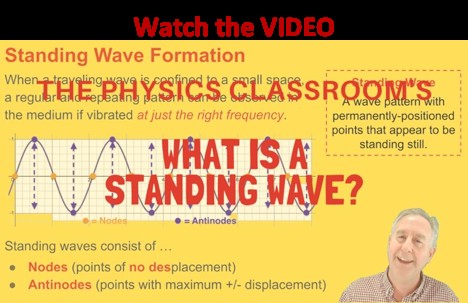A mechanical wave is a fascinating phenomenon: a disturbance created by a vibrating object that travels through a medium, transporting energy. This propagation relies on particle interaction, where one particle pushes or pulls its neighbor, causing displacement from its resting position. As the wave moves, you’ll observe crests and troughs forming a distinct wave pattern, often visualized as a sine wave. This pattern is what we call a traveling wave. It continues until it encounters another wave or a boundary with a different medium.
 Ocean wave demonstrating a traveling wave.
Ocean wave demonstrating a traveling wave.
Traveling waves are characterized by their unconfined nature, meaning they aren’t restricted to a specific space within the medium. A classic example is an ocean wave, moving freely across the water. However, if a wave is introduced into a limited space, like a taught elastic cord, the behavior changes.
Traveling Waves vs. Standing Waves: The Role of Confinement
Imagine an elastic cord held taut with its ends fixed 3 meters apart. A wave introduced into this cord is now confined. It travels to the end, reflects, and returns in the opposite direction. This reflected wave interferes with the incoming wave, creating a complex pattern that may not resemble a simple sine wave.
While traveling waves are still present in this scenario, they become difficult to detect due to interference. Instead of observing a clear sine wave, you see an irregular and constantly changing pattern. This irregularity arises from the incident and reflected waves meeting at different points and times. The middle of the cord might experience a crest meeting a smaller crest, then a crest meeting a trough, resulting in unpredictable motion.
What about Standing Waves?
It is possible to have a confined wave and still observe a clear and regular wave pattern. If you vibrate an elastic rope at a specific frequency, a wave pattern emerges that resembles a sine wave and changes over time. However, this only happens at particular frequencies.
When the correct frequency is used, the interference between the incident and reflected waves creates points that appear to stand still. This phenomenon is known as a standing wave pattern. These patterns are characterized by points along the medium that appear stationary, hence the name. Other points vibrate back and forth, creating a regular and repeating motion.
The diagram below illustrates a standing wave pattern. Each color represents a snapshot of the medium at different times. Notice how point A moves from maximum positive to maximum negative displacement, while point B remains stationary.
Point B, a point of no displacement, is called a node. Standing wave patterns can take on various forms, depending on the frequency of vibration.
Explore Further with Interactive Simulations
To truly grasp the concept of traveling and standing waves, consider using interactive simulations. The Physics Classroom offers a Standing Wave Patterns Interactive that allows you to explore the formation of standing waves, their patterns, and the mathematical relationships that govern them. This interactive experience complements the concepts discussed above, offering a hands-on approach to learning about wave phenomena.

